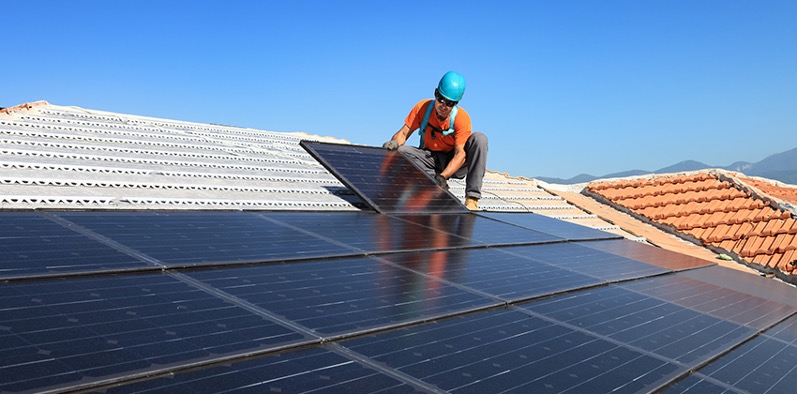08-19-2025

Learning Objectives
1. Understand how market conditions have been changing for residential solar and energy storage in recent years.
2. Determine approximate sizing for solar and energy storage systems based on annual energy consumption and peak demand needs.
3. Understand the market conditions and rate structures that make energy storage most desirable as a complement to residential solar, and when energy storage may not be recommended.
4. Gauge the approximate climate impacts and benefits of a proposed home energy system.
5. Appreciate the role that occupant behavior plays in maximizing the net environmental and financial benefits of a self-sufficient energy system.
6. Assess the advantages and disadvantages of grid-supplied renewable power options relative to rooftop solar and storage.
Comments
great!
CynthyResidential Solar & Storage to Support Net Zero Goals
$40
After a home has been made as energy efficient as possible, it can make sense to power that home on-site with rooftop solar panels. This session will address if, when, and how much solar to add to efficient homes. We will address a second question regarding whether to add local energy storage at the same time, later, or not at all, and how much storage capacity is recommended. We will consider typical payback periods – financial, energy, and greenhouse gas emissions – for each option and some rules of thumb for determining whether those investments are worthwhile under various conditions. Lastly, we will consider how the attractiveness of solar and energy storage can differ for California vs. non-California homes, and whether alternative strategies for achieving clean energy supply in homes might offer key advantages.
Credits: 1 AIA HSW + 1 GBCI (USGBC/CAGBC) + 1 AIBD Primary + 1 Net Zero (ZNCD) + 1 Sustainable Design + 1 AIBC Core LU + 1 AAA Structured LU + 1 OAA, OAQ, SAA, MAA, AAPEI, NWTAA + 1 Climate Action (OAA)
Length: 1 hour
You must be logged in to take a course. Please login or create an account here
Login OR Create an account ShareSponsored by


Residential Solar & Storage to Support Net Zero Goals
$40
After a home has been made as energy efficient as possible, it can make sense to power that home on-site with rooftop solar panels. This session will address if, when, and how much solar to add to efficient homes. We will address a second question regarding whether to add local energy storage at the same time, later, or not at all, and how much storage capacity is recommended. We will consider typical payback periods – financial, energy, and greenhouse gas emissions – for each option and some rules of thumb for determining whether those investments are worthwhile under various conditions. Lastly, we will consider how the attractiveness of solar and energy storage can differ for California vs. non-California homes, and whether alternative strategies for achieving clean energy supply in homes might offer key advantages.
Credits: 1 AIA HSW + 1 GBCI (USGBC/CAGBC) + 1 AIBD Primary + 1 Net Zero (ZNCD) + 1 Sustainable Design + 1 AIBC Core LU + 1 AAA Structured LU + 1 OAA, OAQ, SAA, MAA, AAPEI, NWTAA + 1 Climate Action (OAA)
Length: 1 hour
You must be logged in to take a course. Please login or create an account here
Login OR Create an accountSponsored by

Learning Objectives
1. Understand how market conditions have been changing for residential solar and energy storage in recent years.
2. Determine approximate sizing for solar and energy storage systems based on annual energy consumption and peak demand needs.
3. Understand the market conditions and rate structures that make energy storage most desirable as a complement to residential solar, and when energy storage may not be recommended.
4. Gauge the approximate climate impacts and benefits of a proposed home energy system.
5. Appreciate the role that occupant behavior plays in maximizing the net environmental and financial benefits of a self-sufficient energy system.
6. Assess the advantages and disadvantages of grid-supplied renewable power options relative to rooftop solar and storage.
Comments
great!
Cynthy
Featured
On-Demand Course
Download our App!


Upcoming Events
-

-

-

-
 Hospitality Building Solutions - Central
Hospitality Building Solutions - Central11-18-2025
